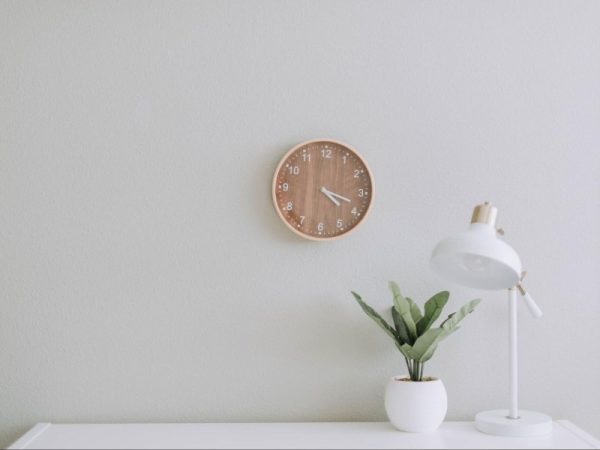When it comes to giving your home a fresh look, one of the key decisions you’ll face is whether to repaint the walls or opt for wallpaper. Both options have their own unique benefits and considerations, and it’s important to weigh the pros and cons before making a choice. In this article, we’ll explore the advantages and disadvantages of repainting and wallpapering to help you make an informed decision for your interior makeover.
Repainting:
Pros:
Versatility: Repainting offers endless possibilities in terms of colors, finishes, and effects. You have the freedom to choose from a wide range of paint colors, including custom mixes, to achieve the exact look you desire. Additionally, you can experiment with different painting techniques like faux finishes, ombre effects, or stenciling to create a unique and personalized space.
Cost-effective: Repainting is generally more budget-friendly than wallpapering, especially if you plan to do it yourself. With a relatively low cost for paint and essential supplies, repainting allows you to transform your space without breaking the bank. It also offers flexibility in terms of how much or how little you want to paint, making it a cost-effective option for both full-room makeovers and smaller touch-ups.
Easy to change: One of the significant advantages of repainting is that it’s easy to change the color whenever you want. If you grow tired of a particular color or want to update your space with the latest trends, all it takes is a fresh coat of paint. This flexibility allows you to experiment with different colors and styles over time, keeping your home constantly updated and reflecting your evolving taste.
Cover-up potential: Repainting can effectively cover up imperfections on the walls, such as scratches, scuff marks, or small dents. With proper surface preparation and the right paint, you can achieve a smooth and flawless finish that hides any blemishes, giving your walls a refreshed and polished appearance.
Cons:
Time-consuming: Repainting can be a time-consuming process, especially for larger areas or intricate designs. It involves multiple steps, including surface preparation, priming, painting, and drying time between coats. The overall time required depends on the size of the project, the number of coats needed, and your level of experience. If time is a constraint, you may need to factor in the duration of the painting process and plan accordingly.
Skill and expertise: While anyone can pick up a paintbrush and start painting, achieving a professional-looking finish requires some skill and expertise. Proper techniques, such as cutting in edges, achieving smooth brush strokes or roller application, and avoiding drips and streaks, can take practice and patience. If you’re not confident in your painting abilities, hiring a professional painter may be a better option.
Maintenance and touch-ups: Over time, painted surfaces may require maintenance and touch-ups to keep them looking their best. Factors like normal wear and tear, exposure to sunlight, or moisture can lead to fading, peeling, or stains. Regular cleaning and periodic touch-ups may be necessary to maintain the appearance and longevity of the painted walls.
Wallpaper
Wallpaper is a popular choice for interior makeovers due to its versatility and unique design options. However, like any other design choice, it has its own set of pros and cons. In this article, we will explore the advantages and disadvantages of wallpaper to help you make an informed decision for your home.
Pros:
Wide Range of Designs: Wallpaper offers a vast array of designs, patterns, textures, and finishes. Whether you prefer bold and vibrant prints, subtle textures, or timeless patterns, there is a wallpaper to suit every style and aesthetic. It allows you to create a unique and personalized space that reflects your personality and taste.
Enhances Visual Appeal: Wallpaper can instantly transform a room and add a touch of luxury and elegance. It has the ability to create depth, visual interest, and focal points that cannot be easily achieved with paint alone. Whether you want to make a statement with a bold feature wall or create a cohesive look throughout the room, wallpaper provides endless design possibilities.
\Covers Imperfections: One of the significant advantages of wallpaper is its ability to conceal wall imperfections. If you have walls with uneven surfaces, cracks, or minor damages, wallpaper can effectively hide these flaws and create a smooth and uniform appearance. It provides a cost-effective solution for improving the overall aesthetics of a space without the need for extensive wall repairs.
Durability: High-quality wallpaper is known for its durability and longevity. It is resistant to fading, staining, and wear and tear, making it a durable option for long-term use. Additionally, certain types of wallpaper, such as vinyl or washable wallpaper, are moisture-resistant and easy to clean, making them suitable for high-traffic areas like kitchens and bathrooms.
Cons
Cost: Wallpaper can be more expensive than repainting, particularly when considering the cost of the wallpaper rolls, adhesive, and professional installation (if required). Depending on the design and quality, the price of wallpaper can vary significantly. It is important to consider your budget and the overall cost implications before committing to wallpaper for your interior makeover.
Time and Effort: Installing wallpaper can be a time-consuming and labor-intensive process, especially if you have little to no experience. Proper surface preparation, measuring, cutting, and matching patterns require precision and attention to detail. Additionally, removing old wallpaper before applying new wallpaper can be a tedious and challenging task.
Limited Changes: Unlike repainting, changing the look of a wallpapered room requires removing the existing wallpaper. This process can be time-consuming and may involve scraping, steaming, or using chemical solvents to strip the old wallpaper before applying a new one. It can be an inconvenience if you prefer to update your space frequently or if your design preferences change over time.
Difficult Repairs: Damaged or torn sections of wallpaper can be challenging to repair seamlessly. If a small area is damaged, it may be necessary to replace the entire wallpaper panel or section, which can be inconvenient and costly. It is important to keep extra wallpaper rolls or samples for future repairs or touch-ups.
By weighing the pros and cons, you can determine if wallpaper is the right choice for your interior makeover.

























